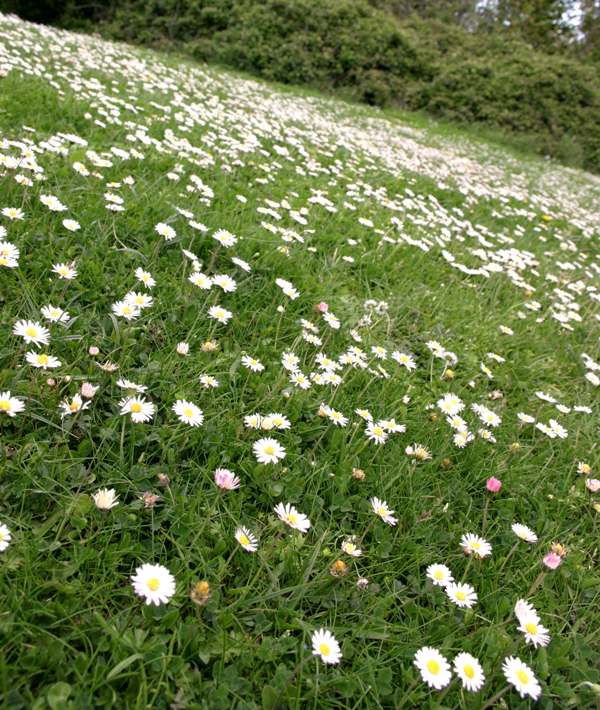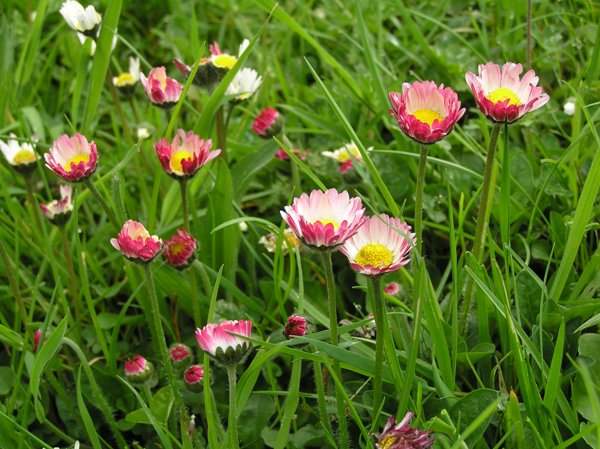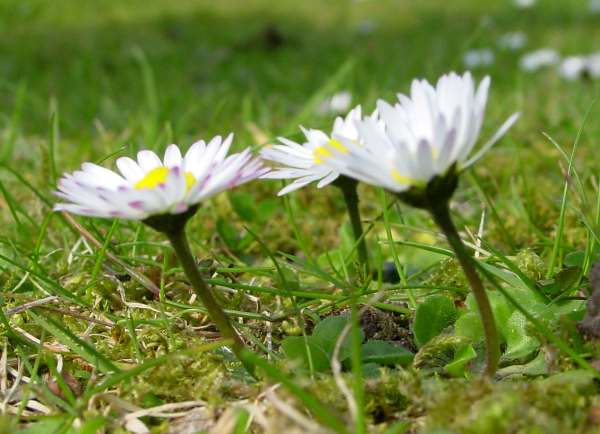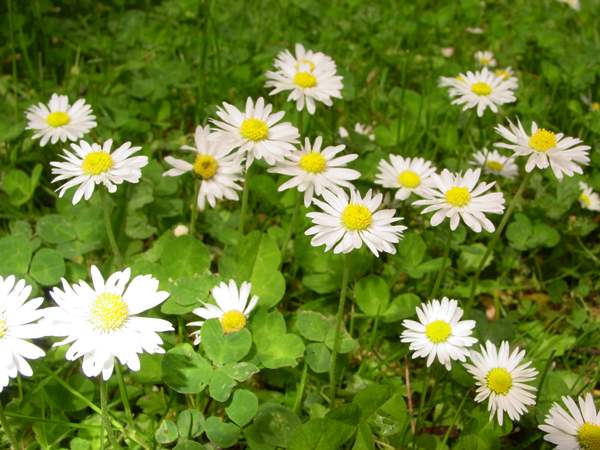Trees Birds Mammals Fish Amphibians Reptiles
Wild Algarve
Bookshop
Bellis perennis - Common Daisy
Phylum: Magnoliophyta - Class: Equisetopsida - Order: Asterales - Family: Asteraceae

This is the commonest of Britain's many daisies, familiar to all and so popular with young children as the raw material of daisy chains.
Description
Rarely more than 10cm tall, this grassland perennial has a basal rosette of spoon-shaped leaves and leafless stalks each topped by one individual (but composite) 'flower' comprising a central group of yellow disc florets surrounded by white ray florets.

Especially when young the outer rays are often tipped with red, a feature that probably adds greatly to the appeal of this popular wildflower.

The overall diameter of a Common Daisy 'flower' is usually between 1.2 and 2.4cm.
Distribution
Daisies are common and widespread throughout Britain and Ireland, and this species is also common on mainland Europe and in many other parts of the world including North America.

Habitat
Common Daisies, or simply Daisies as most people refer to them, grow in lawns, churchyards, playing fields and parks - indeed they seem able to thrive almost anywhere that permanent meadows or other kinds of grassland are kept to a short sward either by moderate grazing, frequent mowing, or just the passage of people's feet.
Blooming Times
Flowers of Bellis perennis first appear in early spring and the plants continues blooming all through summer and into autumn. In May these robust wildflowers are usually at their very best.
Uses
Popular not only in posies but even more so as the raw ingredients of 'daisy chains', Bellis perennis is an amazingly tenacious plant and can be very difficult to eradicate from lawns and golf greens.
Once very common in almost all permanent pastures, Daisies are still among the most abundant of wildflowers wherever fertilisers and weedkillers are not extensively applied to fields, parks and lawns.
Etymology
Bellis, the genus name, comes from the Latin bella meaning beautiful. The specific epithet perennis means, just as it sounds, perennial.
Sue Parker's latest ebook is a revised and enlarged edition of Wild Orchids in The Burren. Full details here...
Buy it for just £5.95 on Amazon...
Sue Parker's new ebook is a comprehensive and fully revised edition of her acclaimed field guide to the Wild Orchids of Wales. Full details here...
Buy it for just £5.95 on Amazon...
Please Help Us: If you have found this information interesting and useful, please consider helping to keep First Nature online by making a small donation towards the web hosting and internet costs.
Any donations over and above the essential running costs will help support the conservation work of Plantlife, the Rivers Trust and charitable botanic gardens - as do author royalties and publisher proceeds from books by Pat and Sue.